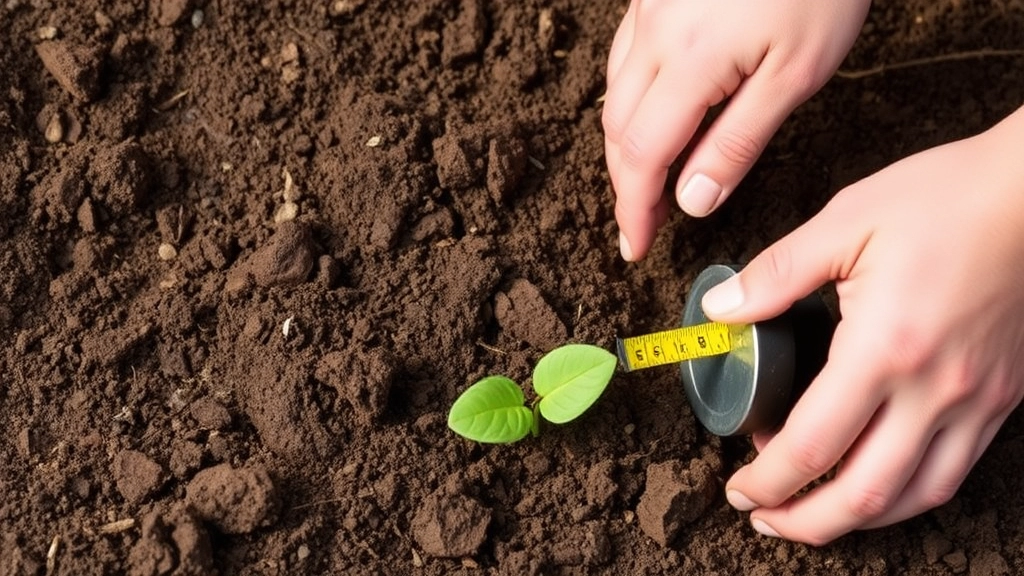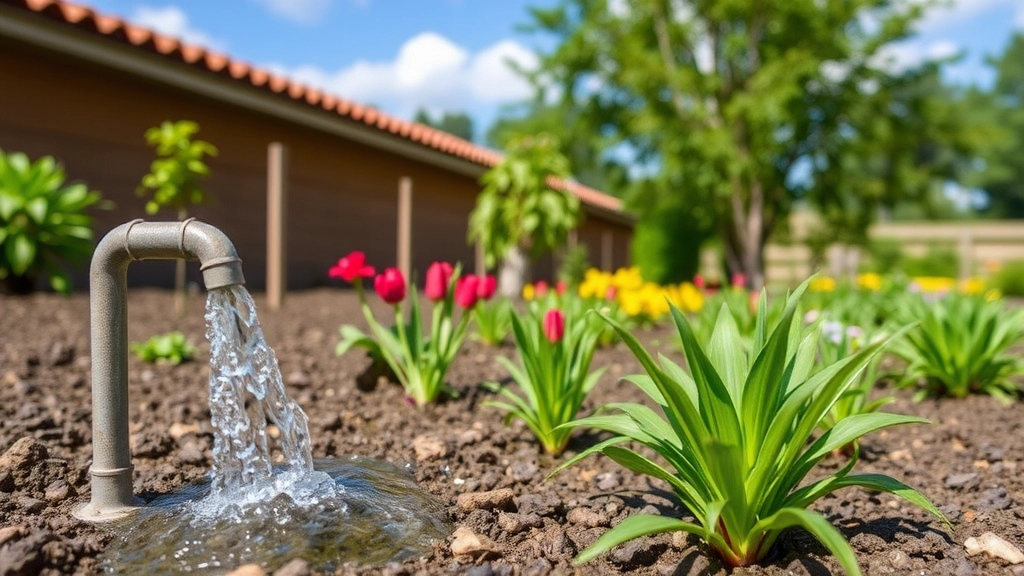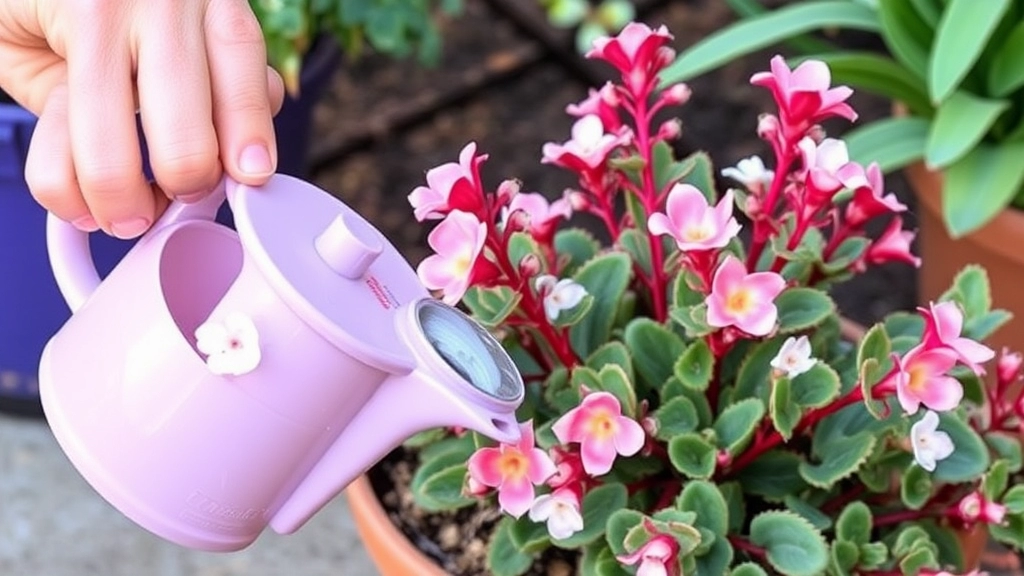Kalanchoe Tomentosa Watering Guide
When it comes to Kalanchoe Tomentosa watering, getting it right is essential for a healthy plant. Known as the Panda Plant, this succulent thrives with minimal watering, making it perfect for those who might forget a watering schedule. The key is to let the soil dry out completely between waterings, usually every two to three weeks.
Overwatering is the biggest culprit of root rot in Kalanchoe Tomentosa. Always check the soil moisture by sticking your finger about an inch deep into the soil—if it feels dry, it’s time to water. Factors like humidity and temperature can also affect how often you need to water, so always keep an eye on your plant’s environment.
Many plant enthusiasts often wonder, “How often should I water my Kalanchoe Tomentosa?”
This succulent, also known as the Panda Plant, thrives in environments where watering is approached with care.
### Optimal Watering Frequency
– Water your Kalanchoe Tomentosa every 2 to 3 weeks during the growing season (spring and summer).
– In the dormant months (autumn and winter), reduce watering to once a month or even less.
The key is to allow the soil to dry out completely between waterings.
### Factors Influencing Watering Needs
– **Temperature:** Warmer temperatures may necessitate more frequent watering.
– **Humidity:** In drier environments, the plant will require more water than in humid conditions.
By understanding these factors, you can better tailor your watering schedule to meet the needs of your Kalanchoe Tomentosa.
### Watering Tips
– Always check the soil moisture before watering.
– Use a pot with good drainage to prevent water from accumulating at the bottom.
The balance of water is vital; too much or too little can lead to problems. For more detailed care instructions, you can refer to our guide on [how to care for Panda Plant Kalanchoe Tomentosa](https://planthq.org/how-to-care-for-panda-plant-kalanchoe-tomentosa-a-complete-guide/). Additionally, if you’re interested in propagation, check out our [Kalanchoe Tomentosa propagation guide](https://planthq.org/kalanchoe-tomentosa-propagation-guide-stepbystep-tips/).
Best Practices for Checking Soil Moisture Levels

So, you’ve got your Kalanchoe Tomentosa, and you’re wondering how to keep it thriving without turning it into a soggy mess.
Checking soil moisture is key.
Here’s how to do it right:
- Use Your Finger: Stick your finger about an inch into the soil. If it feels dry at that depth, it’s time to water.
- Moisture Meter: These handy gadgets can take the guesswork out of it. Just insert it into the soil, and it’ll tell you if your plant needs a drink.
- Lift the Pot: If you’ve got a lightweight pot, lifting it can help you gauge moisture. A heavy pot usually means the soil is still wet.
- Watch the Leaves: Droopy leaves can signal that your plant is thirsty. But hold on—overwatering can cause similar symptoms. So, always check the soil first!
- Timing is Everything: Check the soil moisture every few days, especially during warmer months.
By getting into a routine, you’ll know exactly when your Kalanchoe needs watering.
Avoiding overwatering and root rot is crucial for maintaining a healthy Kalanchoe Tomentosa. This plant can quickly decline if its roots are deprived of oxygen due to excessive moisture.
Why is Overwatering a Problem?
Overwatering creates a soggy environment in the soil, depriving roots of the oxygen they need. This can lead to:
– **Root rot**: A condition caused by fungi that thrive in overly wet conditions, leading to plant decline.
– **Wilting**: Although it seems counterintuitive, overwatered plants can droop due to root damage.
– **Yellowing leaves**: A sign that the plant is struggling to absorb nutrients.
How to Avoid Overwatering
Here are some practical tips to ensure your Kalanchoe Tomentosa thrives without the threat of overwatering:
– **Use well-draining soil**: A mix designed for succulents allows excess water to escape. For more detailed guidance, check out the [best soil for Kalanchoe Blossfeldiana care](https://planthq.org/best-soil-for-kalanchoe-blossfeldiana-care-tips/).
– **Choose the right pot**: Ensure it has drainage holes to prevent water accumulation.
– **Water only when needed**: Follow the moisture-checking practices discussed earlier to determine when to water.
Signs to Watch For
Being proactive can save your plant from root rot. Keep an eye out for:
– **Soft, mushy leaves**: This can indicate that your plant is taking in too much water.
– **Foul smell**: A rotten smell from the soil often signals root rot. For more comprehensive care tips, visit the [complete guide to Kalanchoe Tomentosa](https://planthq.org/how-to-care-for-kalanchoe-tomentosa-complete-guide/).
How Environmental Factors Impact Watering Needs

One of the most common concerns for Kalanchoe Tomentosa owners is understanding how environmental factors can influence their watering routine.
Key Factors to Consider:
- Light Levels:
- Bright, indirect light encourages faster growth and can lead to increased water needs.
- In low light conditions, the plant will require less frequent watering.
- Temperature:
- Warmer temperatures typically result in quicker evaporation, necessitating more frequent watering.
- Conversely, cooler temperatures can slow down growth and reduce water requirements.
- Humidity:
- Low humidity levels can dry out the soil faster, so you may need to check moisture levels more often.
- High humidity can retain moisture in the soil, reducing the need for watering.
- Seasonal Changes:
- During the growing season (spring and summer), Kalanchoe Tomentosa may need more water.
- In the dormant season (autumn and winter), reduce watering as the plant’s growth slows.
Understanding these environmental factors allows you to tailor your watering schedule effectively.
Understanding how to identify the signs of under- or over-watering is crucial for the health of your Kalanchoe Tomentosa. After all, even the best watering routine can go awry, leading to potential issues.
### Signs of Under-Watering:
– **Wrinkled Leaves:** If the leaves appear shrivelled or wrinkled, your plant is likely thirsty.
– **Droopy Appearance:** A drooping plant can indicate that it’s not getting enough moisture.
– **Leaf Drop:** If the lower leaves are falling off, it’s a clear sign that your plant is stressed from lack of water.
### Signs of Over-Watering:
– **Yellowing Leaves:** If the leaves start turning yellow, it could indicate excess moisture.
– **Mushy Stems:** A soft, mushy stem is a sign of root rot, often caused by over-watering.
– **Foul Odour:** A bad smell coming from the soil can signal that the roots are rotting due to too much water.
### What to Do:
– For under-watered plants, gradually increase the watering frequency, ensuring the water reaches the roots.
– For over-watered plants, allow the soil to dry out completely before watering again, and consider repotting if root rot is suspected. For more detailed care instructions, you can refer to the [complete guide to Kalanchoe Tomentosa care](https://planthq.org/how-to-care-for-panda-plant-kalanchoe-tomentosa-a-complete-guide/).
Additionally, if you are dealing with Kalanchoe Blossfeldiana, make sure to check out the [ultimate guide to Kalanchoe Blossfeldiana hybrid care](https://planthq.org/ultimate-guide-to-kalanchoe-blossfeldiana-hybrid-care/) for specific care tips.
FAQs on Kalanchoe Tomentosa Watering
How often should I water my Kalanchoe Tomentosa?
The frequency of watering your Kalanchoe Tomentosa depends on several factors such as soil moisture, light levels, temperature, and humidity. Generally, you should check the soil moisture every few days, especially during warmer months.
How can I check if my Kalanchoe Tomentosa needs water?
There are multiple ways to check soil moisture:
- Use Your Finger: Insert your finger about an inch into the soil. If it feels dry, it’s time to water.
- Moisture Meter: Use a moisture meter to get an accurate reading of the soil’s moisture level.
- Lift the Pot: A heavier pot usually indicates the soil is still wet, while a lighter pot suggests it may need watering.
- Watch the Leaves: Droopy leaves can be a sign of thirst, but always check the soil first to avoid overwatering.
How do light levels affect my Kalanchoe Tomentosa’s watering needs?
Bright, indirect light encourages faster growth and can increase water needs. In contrast, low light conditions will require less frequent watering.
What impact does temperature have on watering frequency?
Warmer temperatures lead to quicker evaporation, necessitating more frequent watering. Cooler temperatures slow down growth and reduce water requirements.
Does humidity affect how often I should water my Kalanchoe Tomentosa?
Yes, low humidity levels can dry out the soil faster, requiring more frequent checks. High humidity retains moisture in the soil, reducing the need for watering.
Should I change my watering routine with the seasons?
Absolutely. During the growing season (spring and summer), your Kalanchoe Tomentosa may need more water. In the dormant season (autumn and winter), reduce watering as the plant’s growth slows.
What are the signs of overwatering or underwatering?
Droopy leaves can signal both overwatering and underwatering. Always check the soil moisture to determine the correct issue. Overwatered plants may have yellowing leaves and soggy soil, while underwatered plants will have dry soil and crispy leaves.
Can I use tap water for my Kalanchoe Tomentosa?
While tap water is generally fine, it’s best to let it sit out for 24 hours to allow chlorine to evaporate. Alternatively, you can use filtered or rainwater for better results.
References
-
Gardening Know How: Kalanchoe Tomentosa Care
-
The Spruce: Growing Panda Plant (Kalanchoe Tomentosa) Indoors
-
House Plants Expert: Kalanchoe Tomentosa (Panda Plant)
